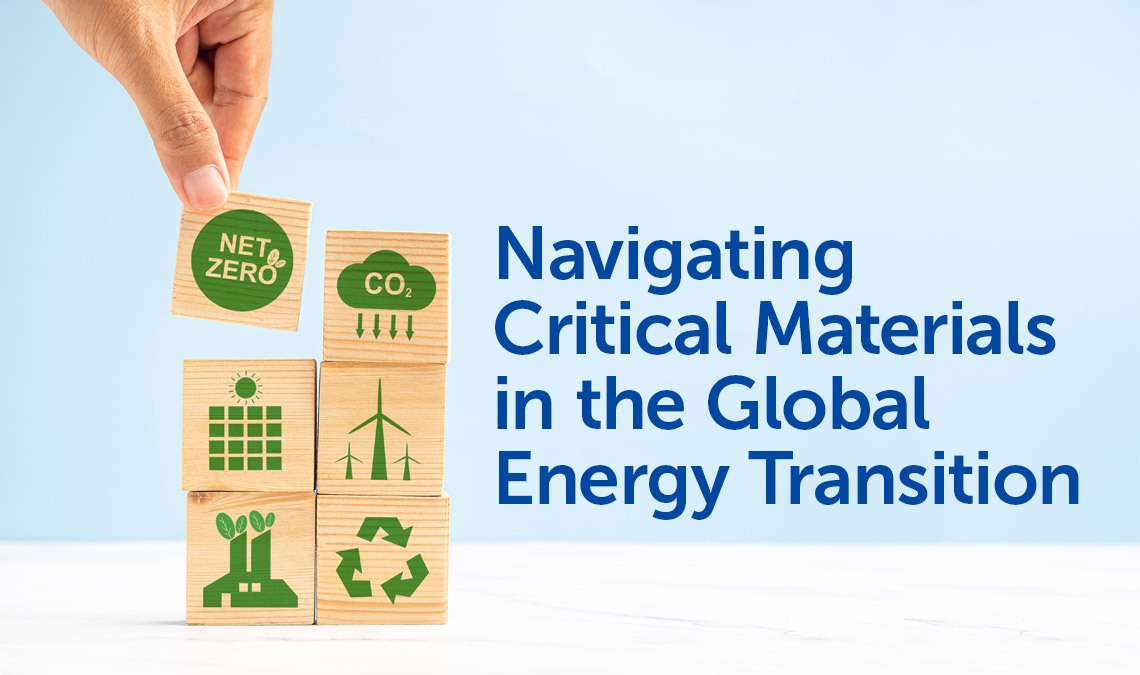The signs of climate change are everywhere, and the world has recognized the urgent need for action. An increasing number of countries have pledged to achieve net-zero carbon dioxide emissions by mid-century, uniting under the banner of environmental responsibility. To reach this ambitious goal, we must undergo a fundamental energy transition. A roadmap outlined in the International Renewable Energy Agency’s (IRENA) World Energy Transitions Outlook and other leading energy scenarios highlights the central role of renewable power generation, energy efficiency, and electrification in various sectors. However, the surge in demand for minerals and metals, often referred to as “greenflation”, has sparked concerns about the feasibility of this transition.
Some recent analyses have suggested that the energy transition necessitates a substantial increase in the demand for minerals and metals. Materials like copper, silver, and rare earth metals have received notable attention, but there’s no universally accepted definition of critical minerals. However, we believe that these concerns are overblown, and several factors support our optimism:
- Quantities Required: The quantities of critical materials needed for the energy transition are often relatively small compared to total consumption. Energy applications constitute only a fraction of the total use for many materials.
- Substitution Potential: Substitution has significant potential in both new and existing applications. Innovations can lead to the use of alternative materials.
- Recycling: Recycling can significantly reduce the need for primary production, minimising environmental impact. Efforts to recycle wind turbines, solar panels, and batteries are underway.
- Resource Availability: The necessary resources exist; it’s a matter of efficiently expanding production volumes and managing supply chains.
Copper, in particular, plays a ubiquitous role in the energy transition. Wind power generation, one of the key components of renewable energy, relies on copper for turbines and power lines. To meet the energy transition goals, we must significantly increase the capacity of wind and solar power generation. While this growth may impact copper markets, it’s important to note that it represents a manageable 7% increase in demand compared to today’s consumption.
Electric vehicles (EVs) also contribute to copper demand, but innovation may reduce this need. As EV battery technology evolves, materials requirements change, and recycling efforts expand. Additionally, the automotive industry is exploring alternatives like aluminium for wiring.
Rare earth metals, including neodymium and dysprosium, are crucial for wind turbines and EVs. However, substitutions and recycling efforts are underway, and supply challenges can be addressed.
While managing supply risks properly is crucial, it’s equally essential to avoid overhyping material scarcity concerns. The mining industry has learned from past supply cycles and is investing to meet the growing demand for critical materials.
Geopolitical concerns around the geographical distribution of supply, especially in China’s dominance, are valid. Governments must manage these concerns while ensuring a balance between supply stability and geopolitical considerations.
International governance must also be enhanced to address critical materials’ challenges effectively. The energy transition is pivotal for the planet’s future, and the attention given to essential materials is justified. While challenges exist, they are not insurmountable, and we can manage the transition properly with the right policies, innovations, and international cooperation.
As a global energy transition agency, IRENA is well-positioned to facilitate discussions among nations, promote transparency, and manage critical materials supply worldwide. As we navigate the energy transition, balancing environmental goals and responsible resource management is crucial. The energy transition is here to stay, and with the right approach, it can create new economic opportunities and a sustainable future for all.
Source: www.irena.org

